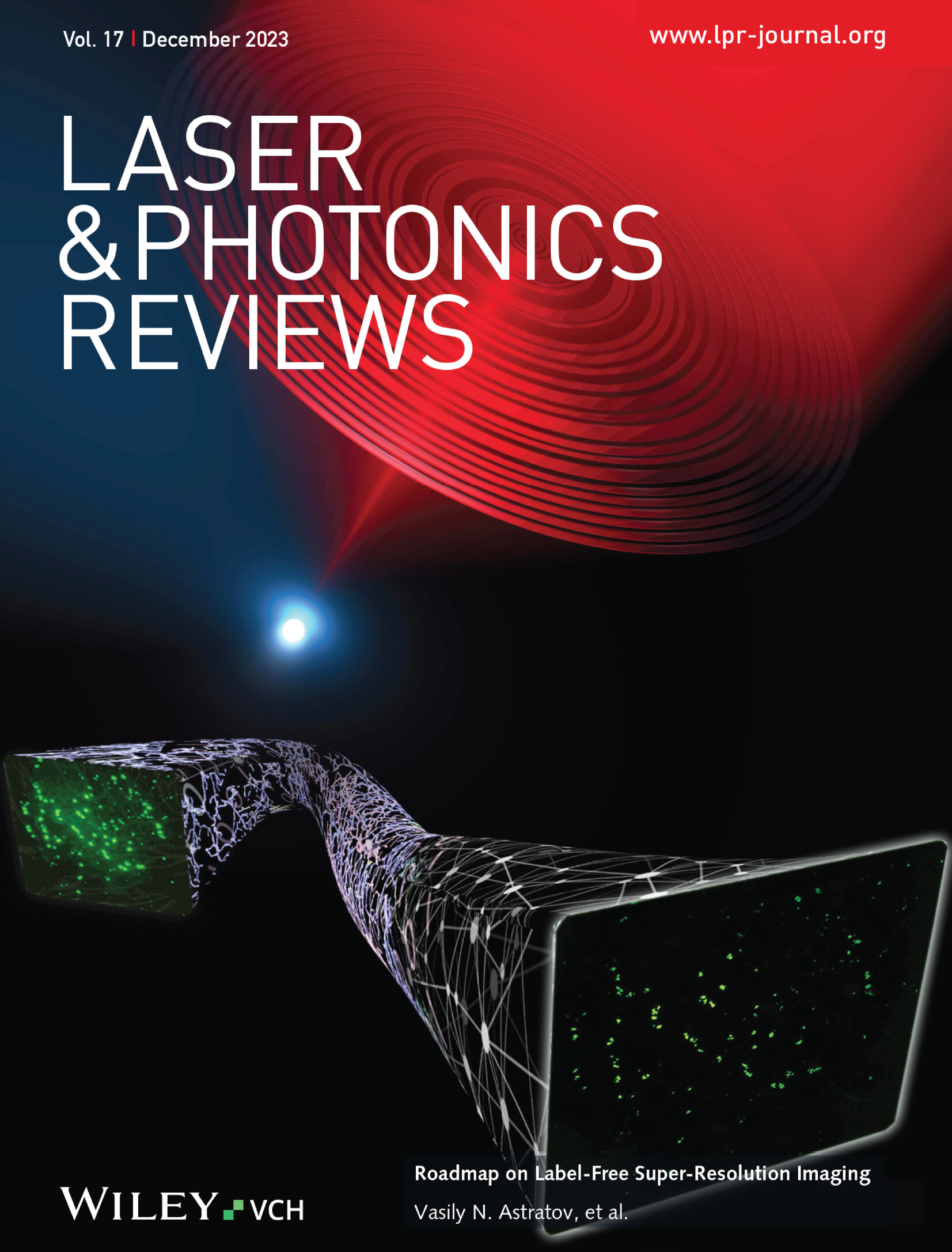蓝色荧光有机发光二极管“热激子”过程激子动力学建模与分析
IF 9.8
1区 物理与天体物理
Q1 OPTICS
引用次数: 0
摘要
全面了解有机发光二极管(oled)的激子动力学对评价其电致发光(EL)性能具有重要意义。“热激子”有机发射材料由于其高效的反向系统间交叉(hRISC)而引起了广泛的兴趣,但其潜在的激子动力学仍然难以捉摸。本文提出了蓝色荧光oled中“热激子”过程的激子动力学模型。该模型完美地再现了基于四种热激子材料的蓝色荧光oled的外量子效率(EQE)与电流密度(EQE‐J)特性,并得到了基本的动力学速率。该模型表明,S1‐Tn (n≥2)湮灭(S1TnA)是主要的猝灭过程,同时伴有一定的T1‐T1湮灭(T1T1A)和S1‐极化子(P)湮灭(S1PA),而T1T1A主要是由于内部转换(IC)造成的损耗。瞬态电致发光(TrEL)测量进一步证明单线态的下降是由于上述猝灭。重要的是,器件寿命与获得的动力学速率呈现完美的正线性关系,从而简单地预测oled的寿命。这项工作有助于提高对“热激子”行为的物理认识,极大地帮助基于热激子材料的高性能蓝色荧光oled的开发。本文章由计算机程序翻译,如有差异,请以英文原文为准。

Modeling and Analysis of Exciton Dynamics on “Hot Exciton” Process in Blue Fluorescent Organic Light‐Emitting Diodes
A comprehensive understanding on exciton dynamics in organic light‐emitting diodes (OLEDs) is of great significance for evaluating their electroluminescence (EL) performance. “Hot exciton” organic emissive materials have attracted widespread interest due to their highly efficient reverse intersystem crossing (hRISC), but their underlying exciton dynamics remain elusive. Herein, an exciton dynamic model on “hot exciton” process in blue fluorescent OLEDs is proposed. The model perfectly reproduces the external quantum efficiency (EQE) versus current density (EQE‐J) characteristics in blue fluorescent OLEDs based on four hot exciton materials, and the fundamental kinetic rates are well obtained. This model reveals that S1 ‐Tn (n ≥ 2) annihilation (S1 Tn A) is the primary quenching process, accompanied by certain T1 ‐T1 annihilation (T1 T1 A) and S1 ‐polaron (P) annihilation (S1 PA), and T1 T1 A is mainly attributed to the loss caused by internal conversion (IC). The transient electroluminescence (TrEL) measurements further demonstrate that the decline in singlets is due to the aforementioned quenching. Importantly, the device lifetime exhibits a perfect positive linear relationship with the obtained kinetic rates, thereby simply enabling to predict the lifetime of OLEDs. This work contributes to improving the physical understanding on “hot exciton” behaviors, greatly aiding the development of high performance blue fluorescent OLEDs based on hot exciton materials.
求助全文
通过发布文献求助,成功后即可免费获取论文全文。
去求助
来源期刊
CiteScore
14.20
自引率
5.50%
发文量
314
审稿时长
2 months
期刊介绍:
Laser & Photonics Reviews is a reputable journal that publishes high-quality Reviews, original Research Articles, and Perspectives in the field of photonics and optics. It covers both theoretical and experimental aspects, including recent groundbreaking research, specific advancements, and innovative applications.
As evidence of its impact and recognition, Laser & Photonics Reviews boasts a remarkable 2022 Impact Factor of 11.0, according to the Journal Citation Reports from Clarivate Analytics (2023). Moreover, it holds impressive rankings in the InCites Journal Citation Reports: in 2021, it was ranked 6th out of 101 in the field of Optics, 15th out of 161 in Applied Physics, and 12th out of 69 in Condensed Matter Physics.
The journal uses the ISSN numbers 1863-8880 for print and 1863-8899 for online publications.

 求助内容:
求助内容: 应助结果提醒方式:
应助结果提醒方式:


